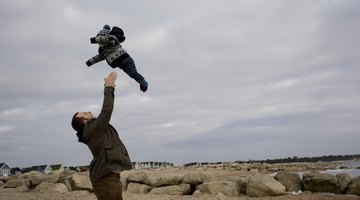What Are the Injuries When an Infant's Head Isn't Supported?
An infant is born with very weak neck muscle and little head control. He relies on parents to support this delicate area until he develops the strength over the course of the year to do this himself. While normal interaction will likely not cause damage, there are injuries that can occur when a child’s head isn’t supported. Some of these can result in death, while others can last a lifetime.
Brain Damage
Brain damage can occur when a baby suffers from acute head trauma, more commonly called “shaken baby syndrome.” According to FamilyCorner.com, long-term brain damage can occur after just 20 seconds of forcible shaking without any support to the head, because the movement causes the infant’s brain to move back and forth within the skull. Blood vessels, nerves and torn tissues are often the result, as are developmental brain delays like impaired speech, learning disabilities, memory problems and even severe mental retardation.
Suffocation

Head Lag in Infant Development
Learn More
In May 2010, the Consumer Product Safety Commission warned parents against the use of sling-style carriers to carry their babies. Research identified at least 14 deaths over the course of 20 years associated with these slings, some of which were the result by improper head support causing the infant head to fold forward. This position cut off the airway of these children, causing suffocation. According to CBS News, children born premature, in fragile health or at low birth weights might be at additional risk. Generally speaking, parents should consider waiting until a child has stronger head control before placing them in a sling.
Neurological Concerns
Neurological problems are often apparent in children with shaken baby syndrome, and can include seizure disorders, impaired motor and sensory skills. While this sort of neurological damage is more common in young infants, according to KidsHealth.org, it can even occur in children as old as 3 or 4. These children often present with language, balance and vision problems and require intense physical and occupational therapy.











